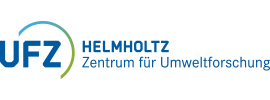Details zur Publikation |
| Kategorie | Textpublikation |
| Referenztyp | Zeitschriften |
| DOI | 10.1021/acsestengg.5c00569 |
Lizenz  |
|
| Titel (primär) | Integrating experiments and machine learning modeling to assess the half-wave potentials of antibiotics |
| Autor | Chen, W.; Korth, B.
|
| Quelle | ACS ES&T Engineering |
| Erscheinungsjahr | 2025 |
| Department | MIBITECH; AME |
| Sprache | englisch |
| Topic | T7 Bioeconomy |
| Supplements | Supplement 1 |
| Keywords | half-wave potential; antibiotics; cyclic voltammetry; QSPR models; machine learning |
| Abstract | Antibiotics are emerging organic contaminants widely distributed in the environment. Understanding their redox properties could help evaluate their environmental fate and design effective treatment strategies. Here, half-wave potentials (E1/2) offer valuable insights into the redox behavior of compounds, but data availability is limited for many antibiotics. A series of cyclic voltammetry (CV) experiments were conducted to determine E1/2 of 23 antibiotics from 7 groups under three pH conditions. We found that almost all antibiotics underwent irreversible oxidation, with sulfonamides and tetracyclines exhibiting pH-dependent shifts in their E1/2 values, representing Nernstian behavior. Quantitative structure–property relationship (QSPR) models were developed using stepwise multiple linear regression (SW-MLR) and ten machine learning algorithms to investigate the influence of molecular structures and identify the best predictive model. Both the SW-MLR and adaptive boosting (AdaBoost) models demonstrated strong performance, characterized by high goodness-of-fit and predictive abilities. In the SW-MLR, molecular structural connectivity and topological complexity were identified as the most influential features, while charge distribution was found to play a dominant role in capturing nonlinear relationships in the AdaBoost model. This work deepens the understanding of the redox behavior of antibiotics and proposes a novel QSPR model for predicting E1/2. Thereby, the model provides indications for their susceptibility against (bio)electrochemical oxidation, however, these predictions need to be verified in corresponding electrochemical and bioelectrochemical degradation studies. |
| dauerhafte UFZ-Verlinkung | https://www.ufz.de/index.php?en=20939&ufzPublicationIdentifier=31362 |
| Chen, W., Korth, B., Fu, D., Worrich, A. (2025): Integrating experiments and machine learning modeling to assess the half-wave potentials of antibiotics ACS ES&T Eng. 10.1021/acsestengg.5c00569 |
|
